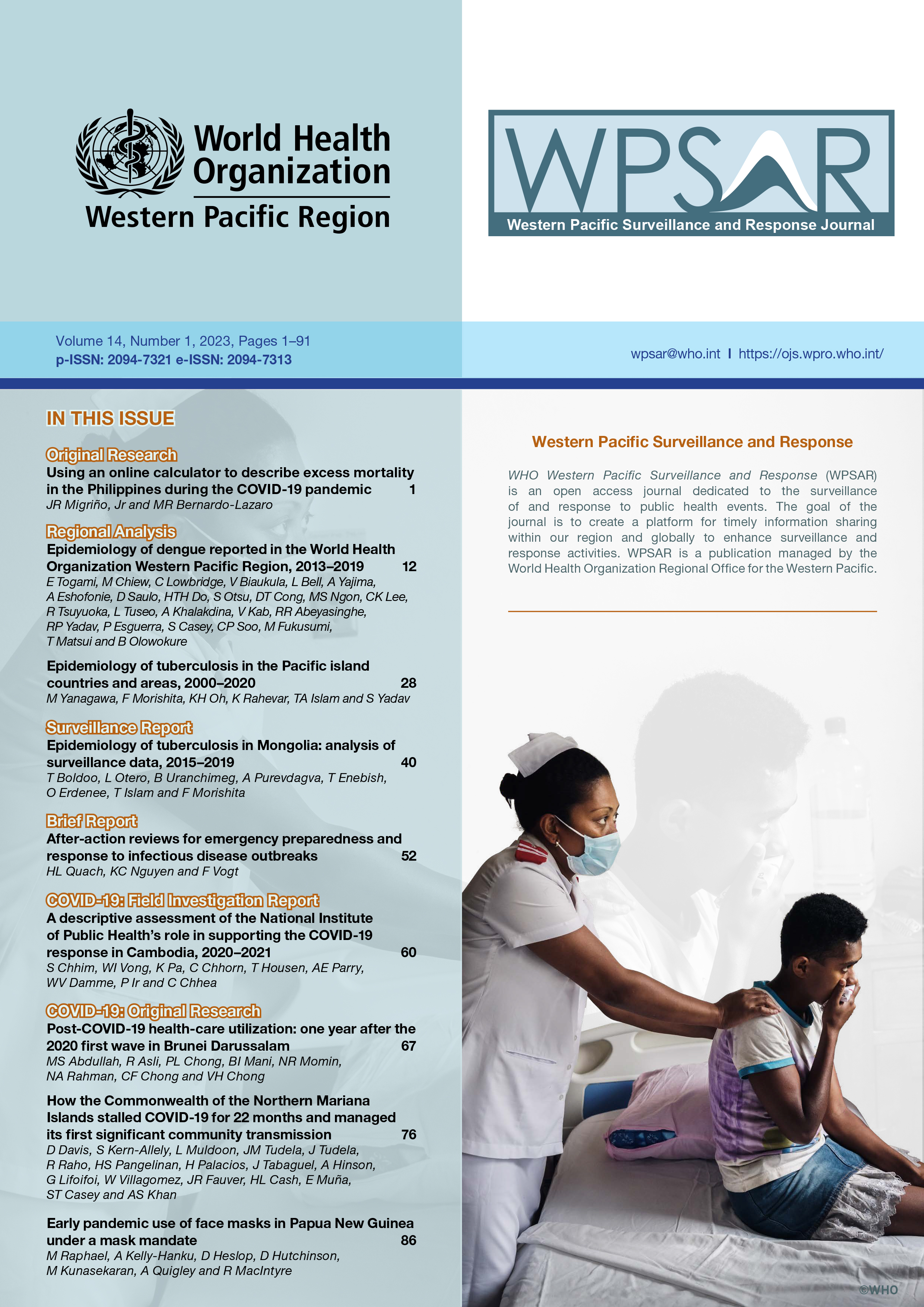Epidemiology of tuberculosis in Mongolia: analysis of surveillance data, 2015–2019
DOI:
https://doi.org/10.5365/wpsar.2023.14.1.931Keywords:
tuberculosis, Mongolia, surveillance, epidemiology, routinely collected health dataAbstract
Mongolia has a high tuberculosis (TB) burden. Data from routine paper-based surveillance were used to describe the epidemiology of TB in Mongolia; the data included testing presumptive TB cases, TB notifications, drug-resistant cases, treatment outcomes and notifications in prisoners. The proportion of the population tested for TB increased between 2015 and 2019. The number and rate per 100 000 population of TB notifications decreased between 2015 and 2018 and then increased in 2019. Most TB notifications in 2019 were in the capital, Ulaanbaatar (59.3%), followed by the central (16.8%), Khangai (10.4%), east (8.5%) and west (5.0%) regions. About half of TB notifications nationally were bacteriologically confirmed (45.4% in 2015, 48.1% in 2019), with the proportion of bacteriologically confirmed TB per province or district varying from 0% to 66%. High TB notification rates were observed in 2019 for males aged 15–54 years (202 per 100 000 population) and females aged 15–34 years (190 per 100 000 population). Treatment success for all forms of TB was 90% in 2019 but was below the 90% target for bacteriologically confirmed cases. Between 2015 and 2019, the number of RR/MDR-TB notifications ranged from 265 to 211. The Mongolian National Tuberculosis Programme needs to continue its efforts in TB control, to further increase the programmatic impact and reduce the TB burden. It is recommended that Mongolia continue to increase TB screening, the use of Xpert testing, contact investigations and preventive treatments, and targeting interventions to the high-burden areas identified in this subnational analysis.

